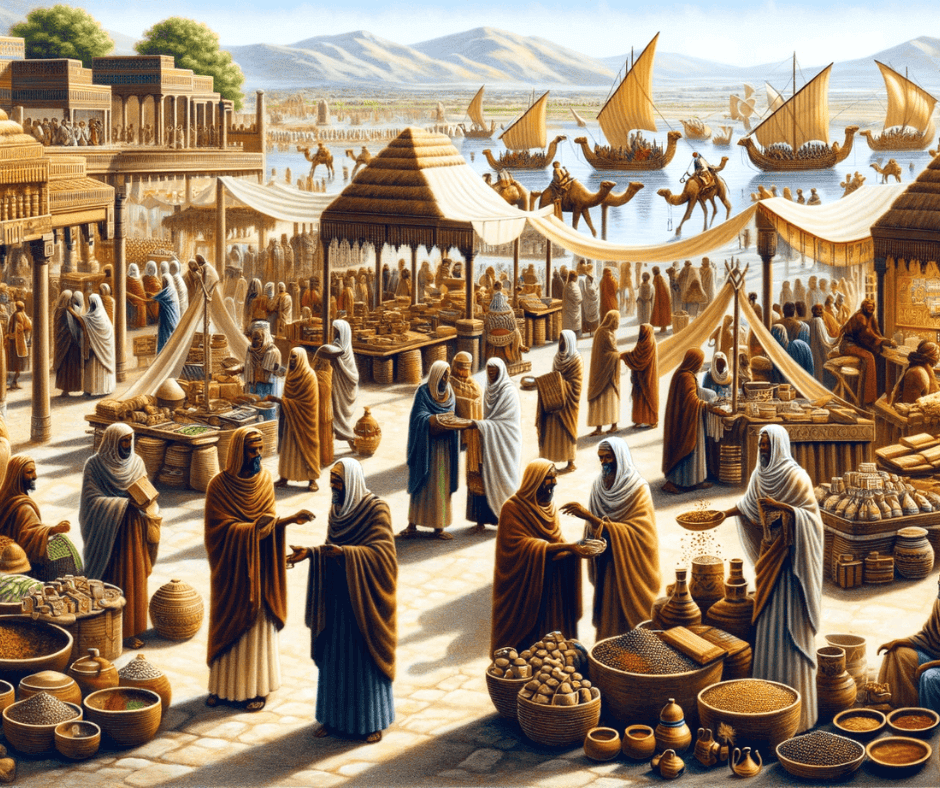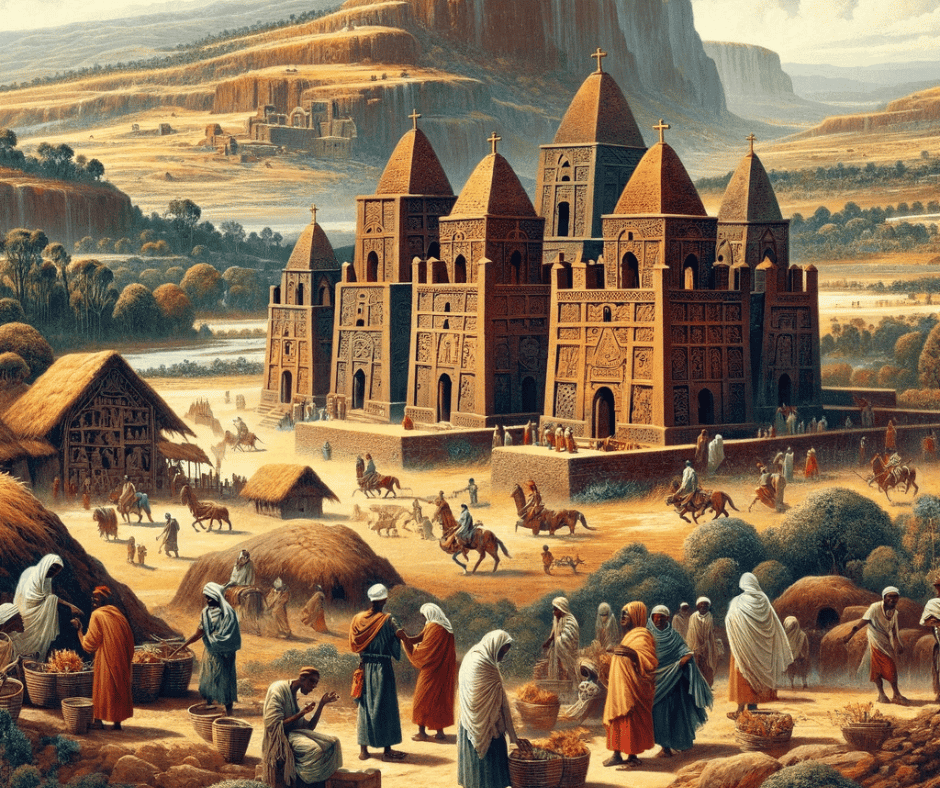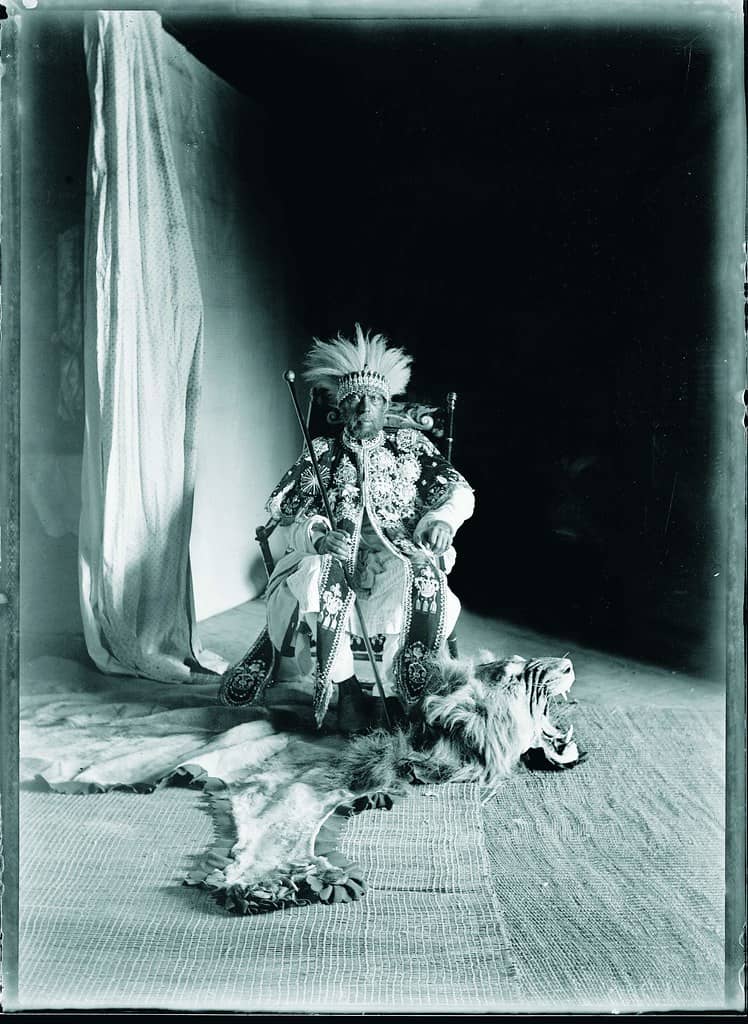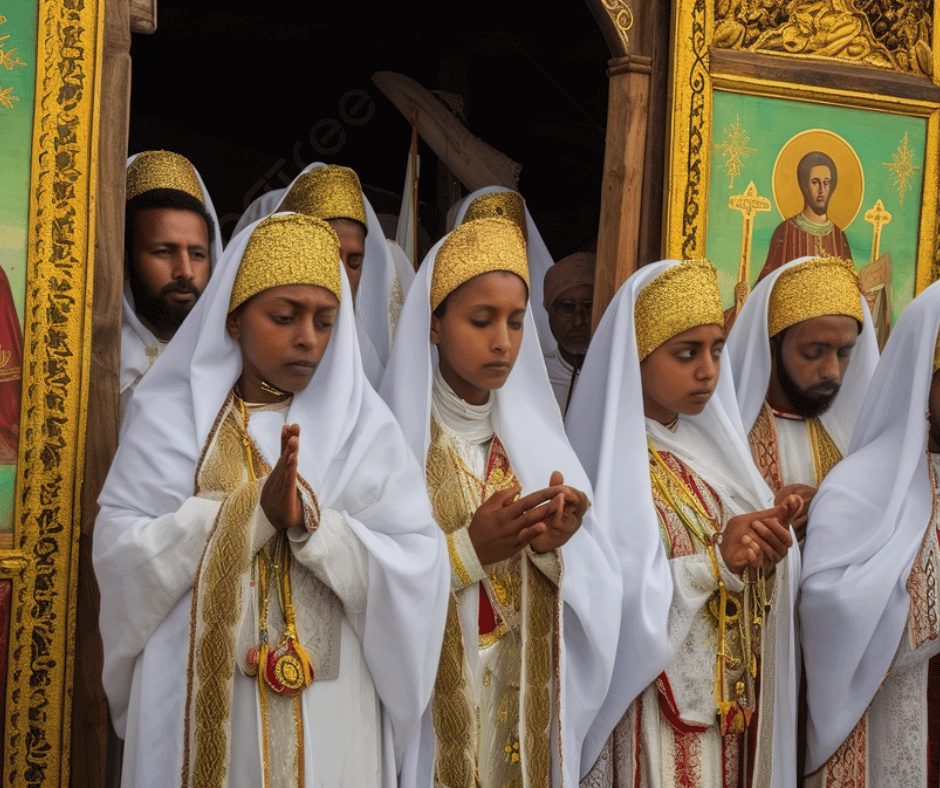- Home
- Exploring the Rich Ethiopian History
Exploring the Rich Ethiopian History
Explore the rich history of Ethiopia, a landlocked country on the Horn of Africa, also known as Abyssinia. Learn more about the fascinating culture and heritage of this ancient land.
Table of Contents
Ethiopia, located in the Horn of Africa, is a country with a rich and diverse history that spans thousands of years. From the ancient Aksumite civilization to the powerful Ethiopian Empire, ethiopian history has been home to a wealth of historical events and cultural developments. The history of Ethiopia is not only significant to the region but also has global implications, as it has been at the crossroads of various civilizations and has been influenced by different cultures. Exploring the history of Ethiopia allows us to understand the complexities and richness of this diverse and ancient civilization. In this article, we will delve into the fascinating and often overlooked history of Ethiopia.

Origins of Ethiopian Civilization
Prehistoric Ethiopian History
Ethiopia, often referred to as the cradle of humanity, holds a pivotal place in the history of human civilization. This assertion is backed by substantial archaeological findings, the most famous being the discovery of “Lucy,” a 3.2 million-year-old hominid fossil, in the Afar region. These findings reveal that the area now known as Ethiopia was inhabited by early humans millions of years ago, making it a key point of interest in the study of human evolution. The diverse array of Paleolithic sites across Ethiopia provides compelling evidence of some of the earliest human settlements and technological advancements.
The Development of Early Societies
The progression from nomadic lifestyles to settled communities in Ethiopia is a significant chapter in human history. Around 10,000 BC, the region saw a transition from a hunter-gatherer existence to an agricultural society. This shift is marked by the domestication of plants and animals, leading to the formation of early agricultural communities. The remains of ancient farming tools and domesticated grains found in the Ethiopian highlands bear testimony to this transformative era. These early societies laid the foundational stones for more complex social structures and cultures that evolved in Ethiopia over millennia.
Influences of Nearby Civilizations
Ethiopia’s geographical location, adjacent to the Red Sea and the Nile River, placed it at a crossroads of cultural exchange and interaction with neighboring civilizations. Ancient Egyptian records from as early as 2000 BC mention trading expeditions to the Land of Punt (likely modern-day Ethiopia or Eritrea), indicating early economic and cultural exchanges. Additionally, Ethiopia’s proximity to the Arabian Peninsula facilitated the intermingling of cultures and ideas. These interactions, especially with the civilizations of Egypt and Saba (Yemen), played a crucial role in shaping the early societal and cultural landscape of Ethiopian History, influencing everything from language to architectural styles.

Kingdom of Aksum
Rise and Expansion of the Aksumite Empire
The Aksumite Empire, an ancient kingdom centered in what is now northern Ethiopia and Eritrea played a huge role in Ethiopian history and marked its rise in the first century AD. This empire, known for its monumental architecture and advanced urbanization, became a powerhouse through strategic trade links connecting the Roman Empire and ancient India. Under King Ezana, Aksum further expanded in the 4th century AD, stretching across the Horn of Africa and across the Red Sea into Arabia. The kingdom’s influence, bolstered by its adoption of Christianity under Ezana, extended over diverse cultures and peoples, showcasing a remarkable example of ancient African civilization’s complexity and sophistication.
Aksumite Culture and Religion
Aksum’s culture was a vibrant tapestry woven from various influences, predominantly its early animistic traditions, and later, Christianity. The introduction of Christianity in the 4th century by King Ezana brought a profound transformation in the empire’s cultural and religious identity. Aksumite coins, inscriptions, and the remarkable stelae (giant carved obelisks) bear witness to these religious shifts and the empire’s artistic and architectural ingenuity. The blend of traditional beliefs with Christian elements created a unique religious and cultural synthesis that would deeply influence Ethiopian Orthodox Christianity’s development.

Trade and Economic Structure
Trade was the lifeline of the Aksumite Empire, fostering its growth into an economic powerhouse of the ancient world. Aksum’s strategic position on key trade routes between India and the Mediterranean facilitated the flourishing of commerce. Goods such as ivory, gold, incense, and exotic animals from Africa traded hands with silk and spices from the East. This lucrative trade network enabled Aksum to mint its own currency, a testament to its economic independence and strength. The Aksumite currency, widely circulated and recognized, was a marker of the empire’s economic sophistication and integration into the global trade system.
Decline and Legacy of Aksum
The decline of the Aksumite Empire began around the 7th century AD, attributed to various factors including environmental changes, over-farming, and the shift of trade routes. As trade routes realigned towards the Arabian Peninsula, Aksum’s economic backbone weakened, leading to its gradual decline. Despite its fall, the legacy of Aksum lives on in modern Ethiopia, shaping its cultural and religious landscapes. The Ethiopian Orthodox Church, a direct descendant of Aksumite Christianity, and the Ge’ez script, originally developed in Aksum, are enduring legacies of this once-mighty empire. The story of Aksum is not merely a tale of rise and fall but a lasting imprint on Ethiopian History, identity and heritage.
Medieval Ethiopian History

Zagwe Dynasty and Its Contributions To Ethiopian History
The Zagwe Dynasty, reigning from approximately the 12th to the early 13th century, was a period marked by significant religious and architectural advancements in the Ethiopian history. This era is renowned for the remarkable construction of the rock-hewn churches of Lalibela, a lasting testament to the dynasty’s devotion and architectural ingenuity. King Lalibela, the most celebrated ruler of the Zagwe Dynasty, envisioned creating a ‘New Jerusalem’ in Ethiopia, leading to the carving of these extraordinary structures from solid rock. These churches, now a UNESCO World Heritage site, are not only a symbol of the Ethiopian Orthodox Church’s deep historical roots but also a monumental achievement of medieval Ethiopian architecture.

Solomonic Dynasty: Restoration and Flourish
The restoration of the Solomonic Dynasty in the 13th century marked a significant turning point in Ethiopian history. Claiming descent from King Solomon of Israel and the Queen of Sheba, this dynasty reaffirmed Ethiopia’s Christian heritage and centralized power. The Solomonic rulers, most notably Emperor Menelik II, expanded the empire’s boundaries and strengthened its administration. This period saw the flowering of Ethiopian history, literature, art, and law, laying down much of the cultural and political foundations that would define modern Ethiopia.

Adal Sultanate
Parallel to the Christian kingdoms, the medieval period in Ethiopian history also witnessed the rise of the Muslim Sultanate of Adal in the Horn of Africa. Flourishing in the 14th and 15th centuries, the Adal Sultanate became a formidable power, engaging in trade and fostering Islamic learning and culture. The sultanate’s military expeditions, particularly under the leadership of Imam Ahmad ibn Ibrahim al-Ghazi, posed significant challenges to the Christian Ethiopian empire, leading to a period of conflict and cultural exchange that shaped the region’s history.
Christian-Muslim Relations in the Medieval Period
The medieval era in Ethiopian history was a time of complex inter-religious dynamics between Christians and Muslims. While there were periods of conflict, notably the Ethiopian-Adal war, there were also instances of coexistence and mutual influence. Trade, intermarriage, and shared political interests often led to peaceful interactions and cultural exchanges between Christian and Muslim communities, contributing to the diverse religious tapestry of Ethiopia.
Architectural Marvels: Rock-Hewn Churches
The medieval period in Ethiopia history is distinguished by its architectural marvels, particularly the rock-hewn churches. These churches, carved directly into the mountains of Ethiopia, exemplify the creativity and devotion of the Ethiopian Orthodox Church during this era. The most famous cluster, located in Lalibela, comprises eleven churches, each with a unique architectural style, intricately carved inside and out. These churches continue to be places of pilgrimage and worship, symbolizing the enduring spiritual and historical legacy of medieval Ethiopia.
Subscribe to stay up-to-date with Ethiopia
Get the Free monthly newsletter

The Era of Princes and Regional Rulers /Zemene Mesafint

Political Fragmentation: Causes and Effect
The Zemene Mesafint, or the Era of Princes, was a period in Ethiopian history from the late 18th to the mid-19th century, characterized by significant political fragmentation and decentralization of power. This era emerged following the decline of the central authority of the Ethiopian Empire, leading to regional rulers, or warlords, gaining substantial autonomy. The causes of this fragmentation were multifaceted, including internal conflicts, weakened central authority, and the absence of a unifying figurehead. As a result, Ethiopia experienced frequent conflicts among regional rulers vying for power, leading to instability and preventing any single entity from asserting total control over the entire region. This period significantly impacted the socio-political landscape of Ethiopian history, laying the groundwork for the later reconsolidation of power under Emperor Tewodros II.
Notable Regional Rulers and Their Legacies
During the Zemene Mesafint, several notable regional rulers left a lasting impact on Ethiopian history. Key figures included Ras Ali II, Ras Gugsa, and Ras Yimam, each ruling different parts of Ethiopia. They were known for their efforts to maintain autonomy and authority in their regions, often engaging in alliances and conflicts with other rulers. Despite their regional influence, these leaders struggled to establish long-term, centralized control over the entire empire. Their legacies are viewed through the lens of their contribution to maintaining regional stability and cultural identity during a time of national fragmentation.
Socio-Economic Conditions during the Era
The socio-economic conditions of Ethiopia during the Zemene Mesafint were marked by significant challenges in the ethiopian history. The continuous regional conflicts led to economic stagnation, as consistent warfare disrupted trade routes and agricultural production. This period saw a decline in urban centers and a return to a more agrarian-based economy. Socially, the era was characterized by the power struggle among the nobility, with limited advancements for the broader populace. However, it also fostered a sense of resilience and regional identity among Ethiopians, setting the stage for the eventual reunification and modernization of Ethiopia in the later 19th century.
Ethiopian Empire in the 19th and 20th Centuries

Modernization under Emperor Tewodros II
Emperor Tewodros II, who reigned from 1855 to 1868, was a pivotal figure in Ethiopian history, known for initiating significant modernization efforts. He sought to re-establish a strong centralized Ethiopian state and embarked on numerous reforms, including the modernization of the military, centralization of administration, and infrastructural developments. Tewodros II’s vision extended to the unification of the various Ethiopian kingdoms, which had been fragmented for centuries. His efforts to modernize and centralize Ethiopia laid the groundwork for the nation-state as it is known today, making his reign a defining period in shaping Ethiopian history.

The Reign of Emperor Menelik II and Territorial Expansion
Emperor Menelik II’s reign, from 1889 to 1913, marked a significant era of territorial expansion and consolidation for Ethiopia. He is credited with expanding Ethiopia’s borders, notably through his military campaigns, which extended Ethiopian control over the Oromo, Somali, and other neighboring groups. Menelik’s reign also saw Ethiopia’s active engagement in international diplomacy, skillfully navigating the Scramble for Africa. His most notable achievement was leading Ethiopia to victory against Italy at the Battle of Adwa in 1896, ensuring Ethiopia’s continued independence during a time when most of Africa was being colonized.
Ethiopia and the Scramble for Africa
During the late 19th century, Ethiopia was an exception in the Scramble for Africa, successfully resisting European colonization. Under the leadership of Emperor Menelik II, Ethiopia engaged diplomatically with European powers while simultaneously strengthening its military capabilities. The strategic foresight of Ethiopian leaders during this period not only preserved the nation’s sovereignty but also established Ethiopia as a symbol of African independence and resistance against colonization.

Italian Invasion and Resistance: The First and Second Italo-Ethiopian Wars
The First Italo-Ethiopian War (1895–1896) and the Second Italo-Ethiopian War (1935–1936) were significant conflicts in Ethiopian history, highlighting its resilience and capacity for resistance. The first war culminated in the Battle of Adwa, where Emperor Menelik II’s forces decisively defeated the Italian army, marking the first major African victory over a European colonial power. The second war saw Italy’s temporary occupation of Ethiopia, but it was met with widespread Ethiopian resistance and guerrilla warfare. These wars not only preserved Ethiopia’s independence but also became emblematic of the broader struggle for African sovereignty and freedom from colonial rule.
Contemporary Ethiopian History

The Reign of Emperor Haile Selassie
Emperor Haile Selassie’s reign, from 1930 to 1974, was a significant era in Ethiopian history, marked by both modernization and controversy. Known for his efforts to modernize Ethiopia, Selassie implemented constitutional reforms, expanded education, and improved infrastructure. However, his reign was also characterized by centralization of power and failure to address feudal inequalities, leading to discontent. Internationally, Selassie was a prominent figure, known for his role in establishing the Organisation of African Unity. His ousting in 1974 by a military coup marked the end of the Ethiopian Empire and a turning point towards a new political landscape in Ethiopian History .

Derg Regime and the Ethiopian Civil War
Following Emperor Haile Selassie’s overthrow, Ethiopia entered a turbulent period under the Derg regime, a Marxist-Leninist military junta. The Derg, led initially by Mengistu Haile Mariam, sought to transform Ethiopia into a socialist state, resulting in radical land reforms and nationalization of industries. This period was marked by the Ethiopian Civil War, internal conflicts, and the infamous Red Terror campaign, leading to widespread human rights abuses and economic hardships. The civil war, coupled with drought and famine, created one of the most challenging periods in Ethiopian History.
Federal Democratic Republic of Ethiopia: Formation and Development
The fall of the Derg regime in 1991 led to the formation of the Federal Democratic Republic of Ethiopia, marking a shift towards a federalist government structure. This new political system aimed to address the diverse ethnic and regional demands by establishing a federation of regional states. The transition was not without challenges, as Ethiopia grappled with issues of governance, ethnic tensions, and economic restructuring. Despite these hurdles, the federal system represented a significant move towards greater political representation and decentralization.
Ethiopia in the 21st Century: Challenges and Progress
In the 21st century, Ethiopia has faced both challenges and significant progress. The country has experienced rapid economic growth, infrastructural development, and advancements in education and health sectors. However, it has also faced challenges such as political unrest, ethnic conflicts, and human rights concerns. Recent developments include the peacemaking efforts with Eritrea and the transition to a new leadership under Prime Minister Abiy Ahmed, who has initiated various reforms. Ethiopia’s journey in the 21st century continues to be a complex blend of striving for development and navigating the intricacies of its diverse societal fabric.
Cultural and Social Aspects

Ethiopian Orthodox Church: History and Influence
The Ethiopian Orthodox Tewahedo Church, one of the oldest Christian denominations in the world, has profoundly shaped Ethiopia’s cultural and social landscape. Established in the 4th century AD, it became a cornerstone of Ethiopian History, identity, intertwining religious and governmental affairs. Its unique traditions, such as the observance of ancient Jewish practices alongside Christian beliefs, set it apart globally. The church’s influence extends beyond spirituality into art, music, and literature, preserving Ethiopia’s rich heritage. Its festivals, like Timkat, and the rock-hewn churches of Lalibela are emblematic of its enduring cultural impact.

Islam: History and Influence
Islam’s introduction to Ethiopia dates back to the Prophet Muhammad’s era, when his early followers found refuge from persecution in the Aksumite Kingdom. Since then, Islam has played a significant role in shaping the country’s religious tapestry. Islamic traditions in ethiopian history are characterized by their moderation and historical integration with local cultures. Islamic influence is evident in various regions, particularly in the architecture of cities like Harar, a UNESCO World Heritage Site, known for its historic mosques and Islamic art.
Languages and Ethnic Diversity in Ethiopian History
Ethiopia’s history is a mosaic of languages and ethnic diversity, with over 80 ethnic groups and languages, including Amharic, Oromo, Tigrinya, and Somali. This diversity has been both a source of rich cultural heritage and complex social dynamics. Languages like Ge’ez, although no longer spoken, hold significant historical importance as they are used in liturgical contexts. This linguistic and ethnic diversity reflects the country’s complex historical interactions, migrations, and social evolutions, contributing to the rich tapestry of Ethiopian society.
Traditional Music, Art, and Cuisine
Ethiopian traditional music, art, and cuisine are integral to the nation’s cultural identity. Ethiopian music, characterized by its unique scales and rhythms, is deeply connected to religious and social rituals. Instruments like the masenqo and krar are central to this musical tradition. In art, Ethiopian Orthodox iconography and church murals depict religious narratives with distinctive styles. Ethiopian cuisine, known for its spices and flavors, is a central part of social life. Dishes like injera, doro wat, and shiro are not just foods but represent a communion of tradition and community.
Ethiopia's Role in Regional and Global Context

Diplomatic Relations and International Presence
Ethiopia, renowned for its historical independence, has played a pivotal role in shaping diplomatic relations and international presence in Africa. As the only African nation that remained uncolonized, it became a symbol of sovereignty and resilience. Ethiopia’s capital, Addis Ababa, is not only a political center but also hosts significant international entities like the African Union (AU) and the United Nations Economic Commission for Africa. This has positioned Ethiopia as a crucial player in diplomatic discussions and peacekeeping efforts across the continent and beyond. Throughout the 20th and 21st centuries, Ethiopia has been actively involved in various diplomatic missions, advocating for collective African interests, and playing a significant role in mediating regional conflicts.

Contributions to African Unity and Pan-Africanism
Ethiopia’s contributions to African unity and Pan-Africanism have been profound and enduring. Emperor Haile Selassie, one of Ethiopia’s most iconic leaders, was a staunch advocate for African solidarity and played a key role in the formation of the Organisation of African Unity (OAU), now known as the African Union (AU), in 1963. His famous speech at the United Nations, emphasizing collective freedom and equality, resonated globally, cementing Ethiopia’s reputation as a champion of African unity. Ethiopia’s commitment to Pan-Africanism is also reflected in its support for liberation movements across Africa, offering asylum and aid to those fighting against colonial rule and apartheid. This legacy continues to influence Ethiopia’s foreign policy, emphasizing collaboration, peace, and collective development in Africa.
Conclusion
In this exploration of Ethiopian history, we have journeyed through a rich tapestry of time, from the ancient civilization of Aksum to the contemporary era, uncovering the profound cultural, social, and political dynamics that have shaped this remarkable nation. Ethiopia’s unique history as a beacon of African independence, its diverse cultural heritage, and its influential role in regional and global affairs underscores its significance not just in Africa, but in the wider world. Understanding Ethiopia’s past offers invaluable insights into the resilience and diversity of human civilizations, and it’s a vivid reminder of the country’s enduring legacy and potential. As Ethiopia continues to navigate the challenges and opportunities of the 21st century, its history stands as a testament to the enduring spirit and rich heritage of the Ethiopian people.
Subscribe to stay up-to-date with Ethiopia
Get the Free monthly newsletter

FAQ
Most frequent questions and answers
What is Ethiopia known for in history?
Ethiopia is known for being one of the oldest locations of human life, its rich history as the only African country to avoid colonization, the ancient Kingdom of Aksum, and being the birthplace of coffee.
Where do Ethiopians originally come from?
Ethiopians originate from the diverse ethnic groups and cultures that have settled in the region, with early human ancestors dating back millions of years, as evidenced by significant anthropological discoveries like ‘Lucy.’
What was Ethiopia called before?
Before being known as Ethiopia, the region was primarily known as Abyssinia, a name used to refer to the northern part of the Ethiopian Highlands.
What is the rich history of Ethiopia?
Ethiopia has a rich history that dates back thousands of years, with deep cultural, political, and religious significance.
What is the significance of Eritrea in Ethiopian history?
Eritrea has played a significant role in Ethiopian history, especially in relation to conflicts, territorial disputes, and political dynamics in the region.
How did Ethiopia navigate being a landlocked country?
Ethiopia’s status as a landlocked country has influenced its approach to trade, infrastructure development, and diplomatic relations with its neighbors and the international community.
What role did the Ethiopian Church play in the country's history?
The Ethiopian Church has a profound historical and cultural significance, influencing religious practices, societal norms, and even political dynamics in the country.
How has Ethiopia's history shaped its current state?
Ethiopia’s history, including its interactions with neighboring countries and colonial powers, has significantly shaped its current geopolitical, social, and economic landscape.
